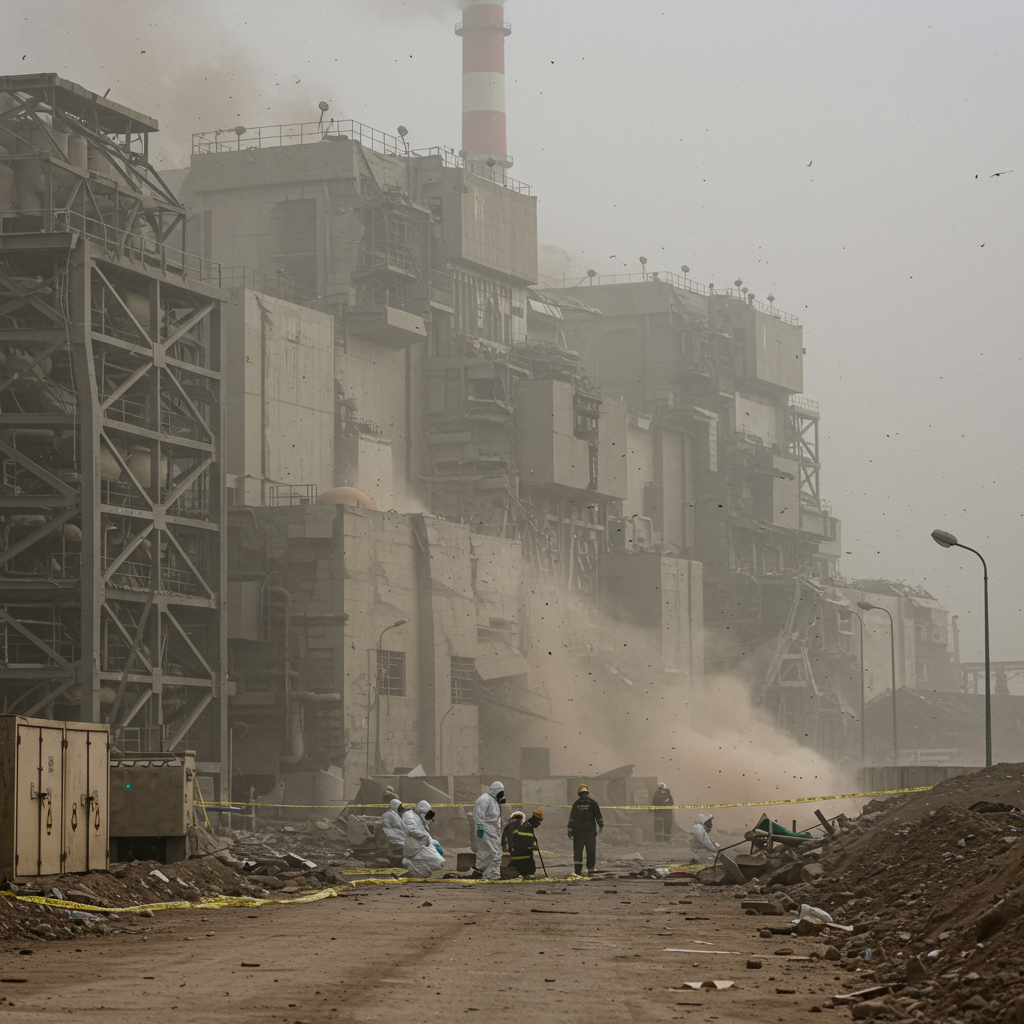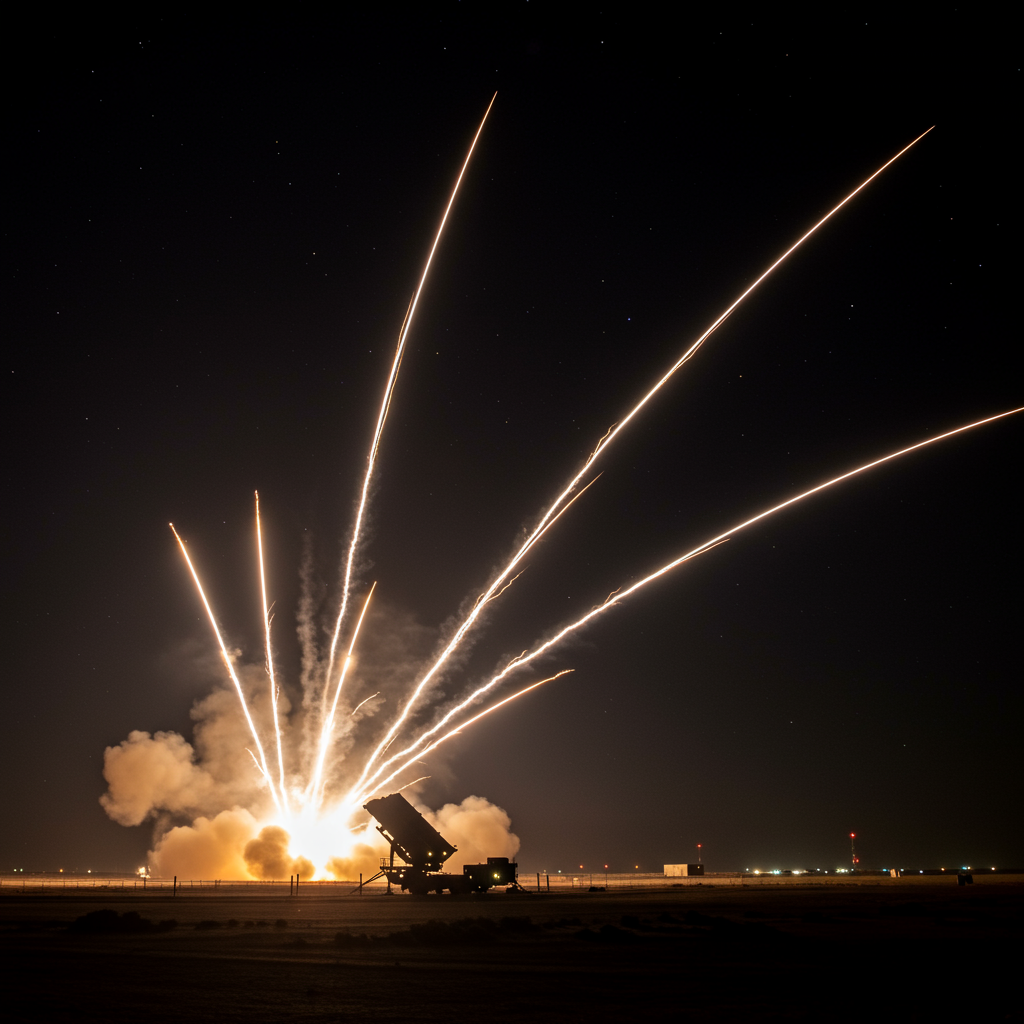Recent military strikes targeting Iran’s nuclear facilities have heightened global concerns, not just about proliferation but also about the potential for dangerous radiological or chemical releases. As tensions escalate and key sites sustain damage, understanding the specific hazards posed by Iran’s diverse nuclear infrastructure becomes critical. While a large-scale nuclear explosion isn’t the primary risk from striking these facilities, experts warn of serious contamination possibilities depending on which site is hit and the materials present.
The International Atomic Energy Agency (IAEA) has expressed deep concern over the attacks, stating they have caused a “sharp degradation” in nuclear safety and security within Iran. While no off-site radiological release affecting the public has been reported so far, the potential for such incidents remains a significant worry.
Iran possesses various nuclear facilities, each presenting unique risks: enrichment plants, research reactors, conversion plants, fuel manufacturing sites, power reactors, and waste storage facilities. The potential consequences of an attack or even an operational accident vary greatly depending on the site’s function, its location, and the type and quantity of nuclear and hazardous chemical materials it contains.
Understanding the Materials and Risks
Iran’s nuclear program involves processing uranium, which naturally contains only a small fraction of the fissile Uranium-235 isotope needed for nuclear reactions. Enrichment facilities concentrate U-235, often converting uranium into a gas called uranium hexafluoride (UF6) for this process. While enriching uranium increases its radioactivity compared to its natural state, even highly enriched uranium (close to weapons grade) is considered to have a relatively “low end of hazard” compared to other radioactive materials created in nuclear reactors.
Experts emphasize that bombing stockpiles of enriched uranium or enrichment equipment would not cause a nuclear explosion or a disaster comparable to Chernobyl or Fukushima. Those catastrophic events involved operational reactors releasing dangerous “fission products” – highly radioactive elements generated during a nuclear chain reaction. Since strikes on enrichment plants don’t trigger a nuclear reaction, these specific, highly dangerous fission products are not present.
However, other significant risks exist:
- Radiological Contamination: While less intense than fission products, uranium isotopes are still radioactive. If dispersed by a blast or accident, particles can pose a health risk if inhaled or ingested, potentially lodging in the body and causing long-term damage. Uranium radiation itself doesn’t travel far, so this risk is primarily localized near the affected site.
- Chemical Toxicity: Uranium hexafluoride (UF6) gas is highly toxic. More significantly, if UF6 comes into contact with moisture in the air, it reacts to form highly corrosive hydrofluoric acid. This acid is extremely dangerous, potentially harmful or fatal upon exposure. For sites handling UF6, the chemical hazard can be a more immediate and severe local risk than the radiation.
- Criticality Risk: At facilities handling specific forms of enriched uranium, particularly uranium metal, there’s a risk of a “criticality accident.” This occurs if enough fissile material is brought together in the right configuration, triggering a sustained nuclear fission chain reaction that releases intense, near-lethal doses of ionizing radiation in the immediate vicinity. This risk is present if proper safety protocols are not followed, even without an attack.
Key Iranian Nuclear Sites and Their Risks
Several sites have been targeted in recent operations, or are considered potential targets, each with distinct risk profiles:
Natanz: Iran’s main uranium enrichment facility, partly underground. Recent strikes reportedly damaged above-ground infrastructure, impacting the power supply crucial for the underground centrifuges. IAEA observed chemical and radiological contamination inside the damaged above-ground facility, primarily related to UF6 handling. However, radiation levels outside the site remained normal. Experts highlight that while inhaling uranium dust/gas inside is hazardous (manageable with protective gear), the main immediate risk inside the UF6 storage areas is the chemical toxicity from fluorine compounds.
Fordow: A second enrichment plant, buried deep (80-90 meters) inside a mountain. Its depth makes it resilient to conventional strikes; destroying it might require specialized “bunker buster” bombs, potentially necessitating US capabilities. While striking Fordow is a strategic objective for some, experts believe the radiological impact outside the facility would likely be minimal even if the mountain collapsed on it. The deep burial and the nature of the materials (UF6, low-hazard uranium isotopes) are expected to contain most contamination locally, though localized chemical hazards from UF6 remain a concern inside.
Isfahan Nuclear Technology Center: Houses multiple facilities, including research reactors, a uranium conversion plant (converting uranium ore into UF6 and other forms), a fuel manufacturing plant, and waste storage. Strikes reportedly hit the conversion plant, chemical lab, and fuel plant. This site is significant because the conversion plant has been involved in producing uranium metal, which poses a higher radiation risk than UF6 and carries a criticality risk if improperly handled. Despite damage, no off-site radiation increase was detected after the attacks.
Bushehr Nuclear Power Plant: Located on the Gulf Coast, this is Iran’s only operational power reactor. According to the IAEA, Bushehr poses the most serious potential radiological consequence risk. Unlike enrichment sites, an operating reactor contains thousands of kilograms of nuclear material, including large quantities of highly radioactive fission products accumulated during operation. An attack on the reactor itself or its spent fuel storage pool could result in a very high release of radioactivity into the environment, potentially affecting a wide area, including the Persian Gulf. Even destroying the plant’s power lines, disabling crucial cooling systems, could lead to a meltdown or spent fuel fire, akin to past major reactor accidents. While experts consider striking Bushehr potentially “foolhardy” due to the catastrophic consequences and its nature as a power, not weapons, facility, it represents the peak radiological hazard in Iran’s program.
Tehran Research Reactor: Located near a reportedly targeted centrifuge testing building. While the building strike itself likely had no radiological consequence, the proximity to an operating research reactor raises concerns. A direct strike on the reactor building itself could lead to significant radiological consequences locally.
Khondab Heavy-Water Research Reactor: Under construction near Arak. Although targeted and damaged, it was not operational and contained no nuclear material at the time of the strike. Thus, no radiological consequences were reported from this attack.
Qom Waste Disposal Site: Represents a significant radiological hazard if targeted due to the potential release of stored radioactive waste.
(Map depiction of Iran’s nuclear facilities would be relevant here, illustrating the location of key sites like Natanz, Fordow, Isfahan, Bushehr, etc.)
Current Status and Broader Implications
As of recent reports, the IAEA continues monitoring the situation, confirming damage at several sites but no off-site public radiation exposure yet*. The attacks aim to set back Iran’s nuclear program and potentially eliminate key expertise, but whether they can halt the program entirely without further significant actions (like targeting Fordow with specialized weapons or other measures) remains uncertain.
Beyond the immediate conflict, the strikes underscore the inherent risks associated with nuclear facilities during times of conflict. While the immediate public health risk from radiation appears low from attacks on enrichment sites based on current information, the potential for a major radiological event at sites like the Bushehr reactor highlights the critical need for de-escalation and ensuring the safety and security of all nuclear installations. The ongoing attacks also raise concerns about the future of non-proliferation efforts and regional stability.




